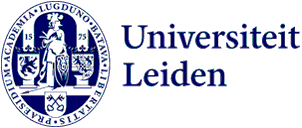
Astronomers and surgeons join forces in the operating theatre
Astronomers and surgeons from Leiden are collaborating with industry to develop an optical instrument that delivers faster, more accurate imaging of tumour tissue and abnormal blood flow during surgery. The underlying technology comes from research into detecting exoplanets.
It was during a Dutch Research Council (NWO) introduction and matchmaking day on new light techniques that astronomer Frans Snik (Leiden University) got talking to vascular surgeon and surgical oncologist Alex Vahrmeijer (both from the LUMC). Vahrmeijer said he didn’t have a good technique to determine where a tumour ends and healthy tissue begins during operations. And Van der Vorst explained how the blood flow in tissue – for example, when operating on a diabetes patient’s foot – is hard to see with the naked eye.
Commercial methods are often too imprecise, the two doctors said, which can lead to delayed treatments, inefficient operations and high healthcare costs.
Planet or star, healthy or sick
Astronomer Snik saw a potential solution to the problem. This is based on an advanced technique (integral field spectroscopy) used by astronomers to distinguish between objects such as stars and exoplanets (planets outside our solar system). By studying the properties of the light (spectrum and polarisation) emitted or reflected by a planet, they can also determine what the planet’s surface and atmosphere are made up of.
Direct translation to the operating theatre
The LUMC surgeons want to use this technique to distinguish tumours from healthy tissue and a good blood flow from an impaired one. ‘The technique that is now used in telescopes will be directly translated to the treatment setting. We expect it to be relatively easy to adapt the technique. It’s much easier to detect light and additional information from the human body than from planets and stars. Not necessarily because of the distance but because we can control the light source in the operating theatre and then analyse the light with a handy, mobile device,’ says Van der Vorst.
This special camera should indicate during operations where the tumour ends or where the blood flow is impaired. The device will be smaller, more convenient and more portable than a telescope, and is expected to be about the size of a shoebox on legs.

Bring instrument to market within six years
The astronomer and surgeons were awarded an NWO grant (EUR 1.3m) for their project, entitled Hyperion. That stands for HYperspectral and Polarization-selective Examination of Regional perfusion and Identification Of Neoplasms. Also involved are other doctors, patients and Dutch companies such as cosine, Quest Medical Imaging and the CHDR. The project involves developing, testing and optimising a prototype, with the ultimate aim of bringing the instrument to market.
Knowledge and Innovation Covenant
Led by Van der Vorst, the project is one of six research projects to receive funding through the Future Optical Broadband Systems research programme within the NWO’s Knowledge and Innovation Covenant. The emphasis in these programmes lies on collaboration between educational institutions and public and private partners.
Source: NOVA/astronomie.nl/LUMC
